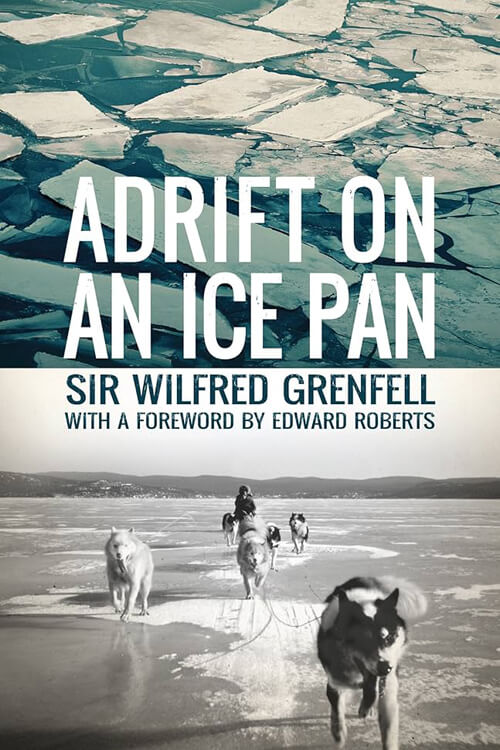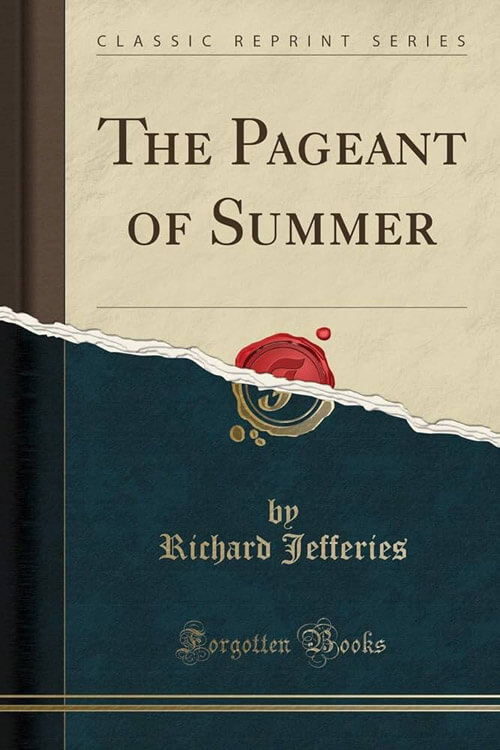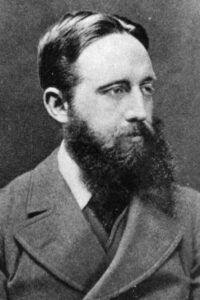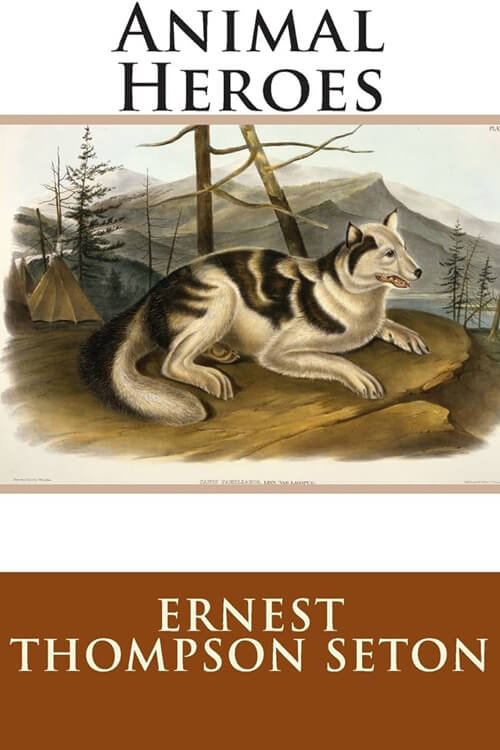
Pageant of Summer
The buds were on them but not yet open, between the may and the rose.
As the wind, wandering over the sea, takes from each wave an invisible portion and brings to those on shore the ethereal essence of ocean, so the air lingering among the wood and hedges—green waves and billows—became full of fine atoms of summer. Swept from notched hawthorn leaves, broad-topped oak leaves, narrow ash sprays, and oval willows; from vast elm cliffs and sharp-taloned brambles under; brushed from the waving grasses and stiffening corn, the dust of the sunshine was borne along and breathed. Steeped in flower and pollen to the music of bees and birds, the stream of the atmosphere became a living thing. It was life to breathe it, for the air itself was life. The strength of the earth went up through the leaves into the wind. Fed thus on the food of the Immortals, the heart opened to the width and depth of the summer—to the broad horizon afar, down to the minutest creature in the grass, up to the highest swallow. Winter shows us Matter in its dead form, like the Primary rocks, like granite and basalt—clear but cold and frozen crystal. Summer shows us Matter changing into life, sap rising from the earth through a million tubes, the alchemic power of light entering the solid oak, and see! it bursts forth in countless leaves. Living things leap in the grass, living things drift upon the air, living things are coming forth to breathe in every hawthorn bush. No longer does the immense weight of Matter—the dead, the crystallized—press ponderously on the thinking mind. The whole office of Matter is to feed life—to feed the green rushes, and the roses that are about to be; to feed the swallows above, and us that wander beneath them. So much greater is this green and common rush than all the Alps.
Fanning so swiftly, the wasp’s wings are but just visible as he passes; did he pause, the light would be apparent through their texture. On the wings of the dragonfly as he hovers an instant before he darts there is a prismatic gleam. These wing textures are even more delicate than the minute filaments on a swallow’s quill, more delicate than the pollen of a flower. They are formed of matter indeed, but how exquisitely it is resolved into the means and organs of life! Though not often consciously recognized, perhaps this is the great pleasure of summer, to watch the earth, the dead particles, resolving themselves into the living case of life, to see the seed leaf push aside the clod and become by degrees the perfumed flower. From the tiny mottled egg come the wings that by and by shall pass the immense sea. It is in this marvelous transformation of clods and cold matter into living things that the joy and the hope of summer reside. Every blade of grass, each leaf, each separate floret and petal, is an inscription speaking of hope.
Read or download Book
Richard Jefferies
John Richard Jefferies (6 November 1848 – 14 August 1887) was an English nature writer, noted for his depiction of English rural life in essays, books of natural history, and novels. His childhood on a small Wiltshire farm had a great influence on him and provided the background to all his major works of fiction.
Jefferies’s corpus of writings covers a range of genres and topics, including Bevis (1882), a classic children’s book, and After London (1885), a work of science fiction. For much of his adult life he suffered from tuberculosis, and his struggles with the illness and with poverty also play a role in his writing. Jefferies valued and cultivated an intensity of feeling in his experience of the world around him, a cultivation that he describes in detail in The Story of My Heart (1883). This work, an introspective depiction of his thoughts and feelings about the world, gained him the reputation of a nature mystic at the time, but it is his success in conveying his awareness of nature and people within it, both in his fiction and in essay collections such as The Amateur Poacher (1879) and Round About a Great Estate (1880), that has drawn most admirers. Walter Besant wrote of his reaction on first reading Jefferies: “Why, we must have been blind all our lives; here were the most wonderful things possible going on under our very noses, but we saw them not.”
Life and works
Early life
While in Swindon, Jefferies had found it difficult to seek publication or employment with London publishers; and early in 1877, with Jessie and their baby son Harold, he moved to a house at what is now 296 Ewell Road, Tolworth, near Surbiton. (There is a wooden plaque commemorating this by the entrance to Surbiton Library.) The area was then at the limits of London’s growth. Jefferies spent much time wandering through the nearby countryside, and these walks would later provide the material for Nature Near London (1883).
The Surbiton years were momentous. The couple’s next child, a daughter called Jessie after her mother (but known by her second name, Phyllis), was born (on 6 December 1880), and Jefferies began to make his name at last. His new surroundings defined him, both to himself and others, as a country writer. Articles drawing on Jefferies’s Wiltshire experiences found a ready market in The Pall Mall Gazette. First came a series of essays based on his friendship with the keeper of the Burderop estate, near Coate, The Gamekeeper at Home, collected as a book in 1878. The book was well received and Jefferies was compared with the great English nature writer, Gilbert White. Three more collections followed the same pattern of publication in The Pall Mall Gazette and then in book form: Wild Life in a Southern County and The Amateur Poacher (both 1879), and Round About a Great Estate (1880). Another collection, Hodge and his Masters (1880) brought together articles first published in the Standard. In the few years that Jefferies took to write these essays, his literary skill developed rapidly: The Amateur Poacher in particular is regarded as a major advance on the earlier works, the first in which he approaches the autobiographical subject matter that is behind his best works. A minor novel, Greene Ferne Farm (1880), was the first to gain recognition, both from contemporaries and in later scholarship.
First successes
The Surbiton years were momentous. The couple’s next child, a daughter called Jessie after her mother (but known by her second name, Phyllis), was born (on 6 December 1880), and Jefferies began to make his name at last. His new surroundings defined him, both to himself and others, as a country writer. Articles drawing on Jefferies’s Wiltshire experiences found a ready market in The Pall Mall Gazette. First came a series of essays based on his friendship with the keeper of the Burderop estate, near Coate, The Gamekeeper at Home, collected as a book in 1878. The book was well received and Jefferies was compared with the great English nature writer, Gilbert White. Three more collections followed the same pattern of publication in The Pall Mall Gazette and then in book form: Wild Life in a Southern County and The Amateur Poacher (both 1879), and Round About a Great Estate (1880). Another collection, Hodge and his Masters (1880) brought together articles first published in the Standard. In the few years that Jefferies took to write these essays, his literary skill developed rapidly: The Amateur Poacher in particular is regarded as a major advance on the earlier works, the first in which he approaches the autobiographical subject matter that is behind his best works. A minor novel, Greene Ferne Farm (1880), was the first to gain recognition, both from contemporaries and in later scholarship.
Final years
After Eltham, Jefferies lived briefly in various parts of Sussex, first at Rotherfield, then in a house on Crowborough Hill. In Crowborough Jefferies completed his most ambitious and most unusual novel, Amaryllis at the Fair (1887). Closely based on his own family at Coate, it describes a farm and a family imperceptibly approaching disaster. There is little narrative development; instead significant or typical moments are presented in short scenes or even tableaux.






